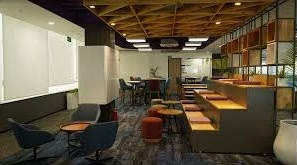Bars are more than venues for drinks and conversation. They are cultural spaces where atmosphere, design, and comfort converge to create memorable experiences. Every detail—from lighting to music—plays a role, but seating holds particular significance. It dictates how long guests linger, how comfortable they feel, and how well the aesthetic vision of the bar is realized. Among the many seating options available, Breuer chairs stand out as the perfect choice for modern bars. With their Bauhaus roots, timeless appeal, and functional durability, they embody everything today’s hospitality spaces seek to achieve.
The Bauhaus Heritage That Shapes Timeless Design
The story of Breuer chairs begins in the 1920s, when Marcel Breuer, a young designer of the Bauhaus school, redefined furniture by marrying form and function. His vision produced chairs that were stripped of excess, relying on tubular steel and woven cane or upholstery to achieve elegance through simplicity. This ethos resonates powerfully in modern bar design, where minimalism, efficiency, and sophistication dominate.
By incorporating Breuer chairs, bars align themselves with a design legacy that is not fleeting but enduring. Patrons often recognize the familiarity of the silhouette, even if they cannot name its origin, creating a sense of cultural sophistication. The chairs bring more than comfort; they bring history into the present.
Aesthetic Versatility for Contemporary Interiors
Modern bars adopt diverse design languages. Some embrace industrial minimalism with concrete and steel; others channel rustic warmth with wood and stone; still others lean into sleek luxury with marble and glass. Breuer chairs integrate seamlessly across all these settings.
The tubular steel frames echo the precision of industrial design, while cane seats or fabric upholstery introduce warmth and tactility. Against raw brick walls, they offer refinement. Paired with polished counters, they prevent sterility by adding texture. Their adaptability ensures they never feel out of place, whether in a neighborhood craft beer bar or an upscale cocktail lounge.
Comfort That Encourages Connection
A bar thrives when guests stay longer, converse freely, and immerse themselves in the atmosphere. Seating that is visually striking but uncomfortable undermines this goal. Breuer chairs succeed because they balance aesthetics with ergonomics.
The cantilevered design allows for a gentle flexibility that makes them more comfortable than rigid wooden stools. The woven cane seat breathes, adapting to the sitter’s body, while upholstered versions provide cushioning for extended stays. In crowded settings, this comfort makes the difference between a fleeting visit and an evening well-spent.
Space Efficiency Without Sacrificing Style
Modern bars often operate within compact urban footprints. Every inch of space matters, and bulky seating can overwhelm. Breuer chairs solve this challenge with their slim profiles and lightweight construction. They take up less room than traditional barstools, yet they retain presence through their iconic design.
Their open framework allows sightlines to flow, preventing the bar from feeling congested. Groups can gather around high tables without feeling crowded, and staff can maneuver with ease. In hospitality environments where fluidity matters, Breuer chairs prove both practical and stylish.
Durability That Meets the Demands of Hospitality
Bar seating must endure constant use. Night after night, chairs are pulled, pushed, leaned on, and moved across floors. Breuer chairs, designed with tubular steel, withstand this rigorous environment. Unlike bulkier wooden stools that may chip or wobble over time, their sturdy frames remain resilient.
The materials used in authentic designs—steel, cane, or high-quality upholstery—age gracefully. Even when wear does occur, replacement parts and refurbishing options ensure longevity. For bar owners, this durability translates to reduced costs over time and a consistent guest experience.
Creating a Signature Look with Breuer Chairs
Bars succeed when they feel distinctive. Patrons return not just for drinks but for the unique atmosphere that sets the venue apart. Breuer chairs contribute to this identity. Their iconic silhouette immediately distinguishes the space, creating a visual memory for guests.
When arranged along a sleek marble counter, they frame the bar as a place of refinement. Grouped around small cocktail tables, they foster intimacy. Combined with pendant lighting and curated décor, they signal intentionality—every detail considered, every choice deliberate. Designers appreciate how easily these chairs elevate a setting without overpowering it.
Pairing Breuer Chairs with Bar Materials
Successful bar design often hinges on material interplay. Breuer chairs excel in these pairings:
- With Wood: The steel frame contrasts against rustic tabletops, while cane or fabric softens the natural grain.
- With Stone or Marble: The clean lines of the chairs echo the precision of stone surfaces, adding elegance without redundancy.
- With Glass and Metal: The reflective tubular frames amplify modernity, complementing glass shelving and metallic accents.
This adaptability ensures that, regardless of the dominant material palette, Breuer chairs contribute balance, cohesion, and character.
Enhancing Social Interaction
Bars are inherently social spaces. Seating should facilitate conversation, eye contact, and a sense of togetherness. The Breuer chair’s proportions are ideal for this. Unlike oversized lounge chairs that create barriers, they offer just the correct scale to bring people closer.
Their lightweight nature also allows staff to rearrange them effortlessly, accommodating groups of different sizes. This flexibility is invaluable in dynamic environments where seating needs shift from happy hours to late-night gatherings.
A Sustainable Choice for Design-Conscious Spaces
Sustainability is no longer a design afterthought—it is central to modern hospitality. Breuer chairs embody this principle. Their construction from durable steel and natural cane reduces waste by extending lifespan. Many reproductions and contemporary versions are also crafted from responsibly sourced or recycled materials.
For bar owners, highlighting sustainable choices resonates with eco-conscious patrons. Choosing Breuer chairs demonstrates a commitment not only to style but also to responsible design.
Continuity Beyond the Bar
Many modern bars are part of open-plan spaces, flowing seamlessly into dining areas, lounges, or terraces. Breuer chairs help create visual continuity across these zones. In dining sections, they pair naturally with tables; in lounge areas, they work alongside sofas or accent chairs. Their versatility ensures a cohesive identity throughout the venue, unifying multiple functions under one design language.
For homeowners with residential bars, this adaptability proves equally valuable. The chairs transition effortlessly from kitchen counters to dining spaces, extending their utility across different environments.
Why Breuer Chairs Remain Irreplaceable
In the fast-paced world of design, trends rise and fall quickly. Yet Breuer chairs endure because they are not bound by passing fashions. Their Bauhaus origins, minimalist elegance, and enduring comfort ensure they remain relevant, no matter how design philosophies evolve. For modern bars, where identity, atmosphere, and practicality intertwine, they offer the perfect synthesis of all three.
For those seeking authenticity and longevity, investing in Breuer Cesca Chair designs ensures the bar not only meets current trends but also honors timeless principles of good design.
Conclusion
Bars are theaters of experience, and every element contributes to the performance. Seating is among the most critical, influencing comfort, flow, and aesthetics. Marcel Breuer’s iconic chairs embody all the qualities modern bars demand: elegance rooted in history, comfort that invites lingering, resilience to withstand heavy use, and versatility to complement diverse interiors.
By choosing Breuer chairs, bar owners and designers create more than seating arrangements. They craft atmospheres of sophistication, warmth, and timeless appeal—spaces where patrons don’t just stop in for a drink, but where they return, again and again, for the experience.






